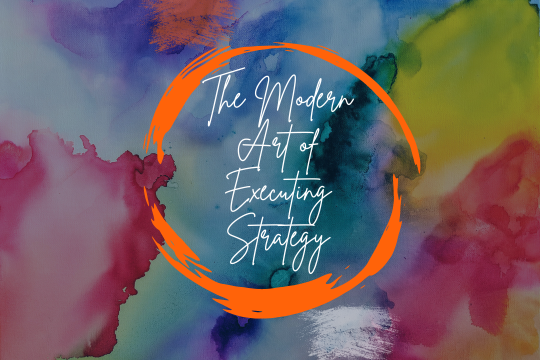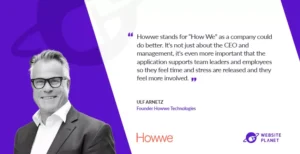Boards and companies spend lots of time developing strategy but significantly less time focusing on its implementation. As a result, the goals in the strategy are rarely achieved.
Successfully achieving goal setting in a strategy is not easy. The nature of goals is that they are set high, and a CEO’s challenges regarding goal setting differ from those of an employee. The CEO has the overall responsibility of ensuring that the company succeeds in the plans it has promised the board, owners, and employees. Many companies have high-level goals related to financial performance but struggle to achieve them on-time or to generate executable goals that align to the top-level goals across all functions in the company that are also measurable.
Developing a concrete and actionable strategy for everyone most often takes far too long, and many business leaders experience difficulties in successfully communicating and anchoring the plan through the management group, functional managers, and throughout the organisation, so that everyone understands the top-level plan and is actively involved in its execution at every level. It is therefore challenging for employees to contribute as they don’t know what to do, or why or when to do it. As a result, much of the power in the companies, through leveraging the dynamism and drive of its people, remains unleashed.
Howwe Technologies, which develops an enterprise execution software that helps companies achieve their most critical goals faster and more safely with its software, Howwe®.
Implementation of the strategy is not prioritized
The development of the strategy is often given a high priority, and many companies hire external management consultants to develop a strategy and set goals for the company. When you include the time that boards, senior executives, coaches and consultants spend on strategy development, the total cost of strategy development is huge, but a good strategy does not necessarily translate into good results.
A strategy creates value only when it is implemented on-time and its goals are achieved. Investing in implementing the strategy has been more difficult for companies to prioritize, with diligent consistent follow-through, and this is a contributing factor to why the initiatives in the strategy are rarely achieved.
In practice, plans often get stuck in ‘analogue’ PowerPoint documents or Excel or staff simply have excuses that they are ‘too busy’ to spend time on the strategy, that may have been agreed only recently. The consequence is all too often that the strategy gets stuck at the management level, it is not broken down into activities that employees can tangibly execute, and ultimately the company’s most important goals are not achieved on-time.
New times require modern tools
In a changing economy, with new work-from-home paradigms and ever-changing business cycles, it is challenging to get an accurate picture of how the plans are going and how to involve and motivate employees. There is a need to unite employees behind the goals if you are to have a chance of getting them on-board fast enough when the goals change. With modern technology employees at all levels of the company can be involved and can contribute to achieving the goals in the company’s strategy within the set calendar time.
Imagine the CEO of a large enterprise with tens of thousands of staff, to allow the finance department to not have a modern accounting system or a sales department without a CRM system or a manufacturing division or company without its own ERP. It is almost unthinkable today. Software to support the CEO’s execution of the strategy is equally essential to create increased opportunities for accelerated growth. This class of execution software is already proven to be business-critical, providing its enterprise clients with a distinct competitive advantage of accelerated growth and nimbleness against their ‘analogue’ peers.
5 tips on how a CEO can speed up the execution of the strategy
- Create clarity around the goals in the strategy so that all employees understand what needs to be done and why – and how they can contribute.
- Break down the three-year strategy into a concrete business plan that you can act on already in the current quarter.
- Keep the strategy alive, otherwise it quickly becomes secondary for both the CEO and employees, leading to a loss of focus and time and a postponement of milestones.
- Set aside time for strategic work. Without dedicated focus on strategic initiatives, the focus on strategy will be drowned out by the ‘operational whirlwind’ or the day-to-day issues.
- Ensure that you have your executive team fully engaged with your company’s priority initiatives. Otherwise, the risk is high that the strategy will get stuck at the executive level with the anchoring of the plan to executable initiatives being delayed compared to the original plan.
A health-check of an organisations’ underlying performance capability
Howwe Technologies has now developed a new analysis tool, Assessment™, to help CEOs get a better understanding of their organisation’s strengths, weaknesses, and financial potential to give them better indication of the conditions needed to succeed with their goals. This process takes only half an hour and by answering 30 questions, the CEO maps the company’s organizational strengths and challenges as well as the CEO’s individual conditions as a leader for the organisation and factors that affect the opportunities to achieve the goals in the company’s strategy Sign up to do an Assessment™ free of charge.
Assessment™ has been developed based on research from, among others, Gartner, McKinsey, and data from the thousands of teams in the enterprise execution software Howwe®. Based on the answers in the Assessment™, a report is generated that shows what conditions an organisation must attain to succeed in implementing its change process to successfully execute its plans and what outcome a CEO can expect based on the current situation. This Assessment™ report is a first step on the journey to making a strategy actionable.
The analysis of all completed Assessments™ shows that many business leaders feel that the strategy work gets stuck already at the executive level, making it difficult for functional managers to take the baton and manage change downward in their respective organisations.
And while no CEO wants ‘an extra system’ or ‘more data’, from the CEOs and their enterprises that use Howwe®, they find that their businesses are accelerating by 30% compared to prior to using Howwe. So, the focus on ‘data’ becomes about more measurable goals and initiatives at all levels and the right software framework to track progress to plan. And this in turn makes managers and companies more efficient and successful so there is more time to focus on the bigger issues and goals and what makes the company successful at all levels, year on year.
Blog post written by Katarina Bennich.





